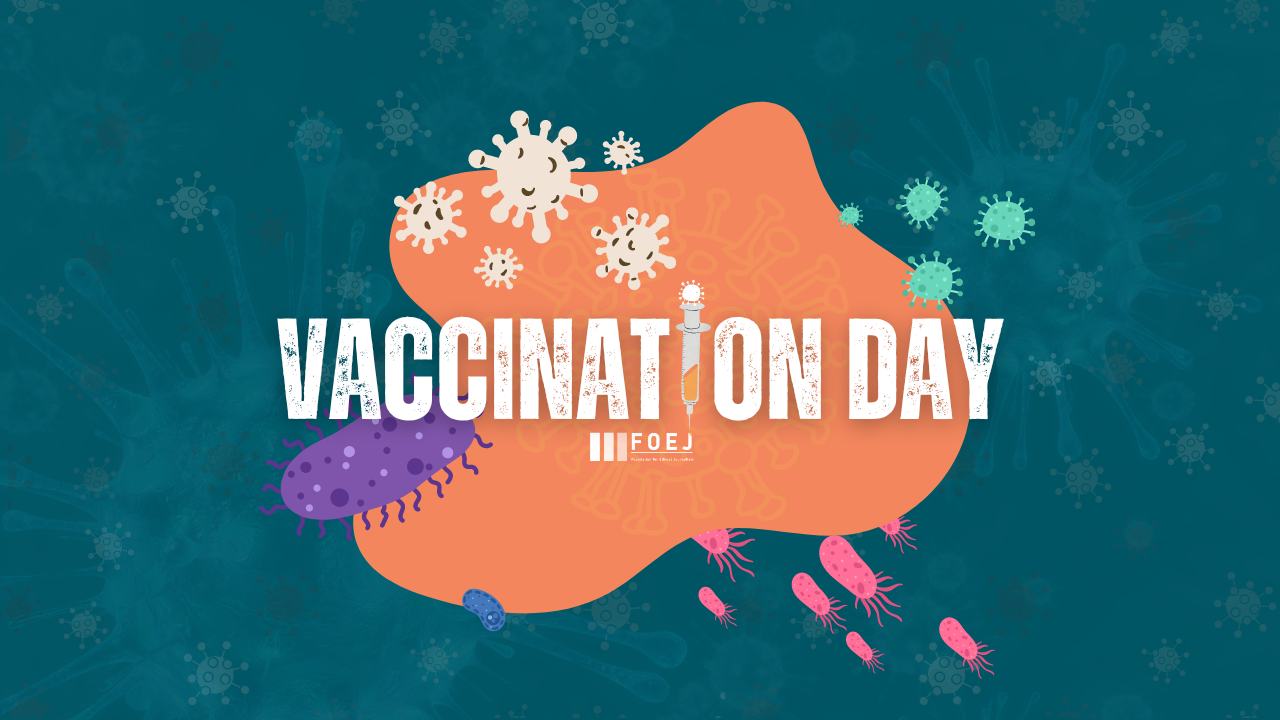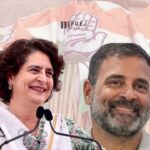National Vaccination Day in India is a notable event that dates back to the launch of the Pulse Polio Campaign in 1995. This day, commemorated annually on March 16th, serves as a reminder of the value of vaccination in disease prevention and public health promotion. National Vaccination Day has developed to include more extensive immunisation initiatives beyond polio to protect people from vaccine-preventable diseases.
“Vaccination is a significant part of life which should be taken care of, and every newborn should be vaccinated”
Ms Sadaf Ahmed, Virologist
On National Vaccination Day, Mohammad Haris meets Ms. Sadaf Ahmed, a virologist who dwells on everything, from viruses and global warming to leading catalysts for the spread of viruses.
Can you explain What a virus is?
A virus is a microscopic infectious agent that occupies a place near the boundary between the living and the nonliving. It consists of a segment of nucleic acid (either DNA or RNA) surrounded by a protein coat and cannot replicate alone; instead, it must infect cells and use components of the host cell to make copies of itself.
What are the new kinds of viruses emerging in our society?
In today’s world, where every city is becoming an urban jungle, global change is also taking place in which new forms of viruses are forming and mutating. The emergence of new viruses, influenced by globalization and climate change, presents ongoing public health challenges. Priority pathogens like Ebola, Marburg, SARS, Nipah, and Machupo viruses, identified by the World Health Organization, pose significant risks due to their pandemic potential. Recent research projects a substantial increase in deaths from these viruses by 2050, highlighting the need for enhanced surveillance, research, and preparedness to address evolving viral threats. Understanding zoonotic viruses originating in animals and their potential to cause severe outbreaks underscores the importance of monitoring and mitigating these pathogens to prevent future health crises.
Are globalisation and global warming affecting the mutation of viruses?
Globalisation and global warming profoundly affect viruses, shaping their transmission patterns and evolution. For instance, the increased interconnectedness of the world due to globalisation has facilitated the rapid spread of viruses like the H1N1 influenza virus, which emerged in 2009 and quickly spread globally due to international travel and trade. Similarly, the Zika virus, initially confined to a small area, spread rapidly to different continents through global transportation networks, highlighting the role of globalisation in virus dissemination.”
Asking further about the studies and examples of global warming and virus symbiotic relation?
On the other hand, global warming has been linked to the expansion of vector-borne diseases like dengue fever and malaria. Rising temperatures and changing precipitation patterns create more favourable conditions for disease-carrying vectors to thrive and spread infections. For example, the spread of dengue fever to new regions previously unaffected by the disease is attributed to climate change altering the habitats of mosquitoes that transmit the virus.
Research indicates that the convergence of globalization and global warming intensifies the impact of viruses on human health. Understanding these dynamics is crucial for implementing effective strategies to mitigate the spread of infectious diseases and adapt to the changing landscape of viral threats.
What is the Significance of Vaccination?
Vaccination is a cornerstone in the fight against infectious diseases caused by viruses. Vaccines stimulate the immune system to produce antibodies that provide protection against specific viruses, thereby reducing the likelihood of infection and severe illness. In the case of COVID-19, widespread vaccination efforts have played a pivotal role in curbing the spread of the virus and mitigating its impact on healthcare systems and economies. Emphasizing the importance of vaccination as a preventive measure is crucial in building immunity at both individual and population levels.
While the conversation, she discussed some important preventive measures:
- Prioritize Hand Hygiene
- Regularly wash hands with soap and water for at least 20 seconds.
- Use hand sanitiser containing at least 60% alcohol when handwashing is impossible.
- Cover Up When Coughing or Sneezing
- When coughing or sneezing, always cover your mouth and nose with a tissue or elbow.
- Dispose of tissues properly and wash hands immediately after.
- Mask Up in Crowded Areas
- Wear a mask that covers your nose and mouth in crowded settings or when social distancing is challenging.
- Ensure the mask fits well and is worn correctly.
- Maintain Social Distance
- Keep a safe distance of at least 6 feet from others, especially in public places.
- Avoid close contact with individuals displaying symptoms of illness.
- Stay Updated and Follow the Guidelines
- Stay informed by following updates from reputable sources like the CDC or WHO.
- Adhere to recommended guidelines on quarantine, isolation, and other preventive measures.
It is essential to emphasize the significance of preventive steps as they are crucial in breaking the chain of infection and reducing the burden on healthcare systems. By adopting these measures, individuals protect themselves and contribute to safeguarding vulnerable populations and preventing the spread of diseases within communities.
Interviewer’s Note:
The growing population, pollution, and the emergence of new viruses are valid and reflect the complex challenges faced by our world today. The interplay between population growth, environmental degradation, and the evolution of viruses underscores the critical need for sustainable practices and proactive healthcare measures to safeguard the planet and future generations.
The role of medical workers in addressing these challenges is paramount. Their dedication and expertise are essential in managing public health crises, implementing vaccination programs, and conducting research to combat emerging viruses.
I am also concerned about a new virus which is spreading like wildfire in India, “the hate Virus’ ‘. Which is not talked about much but it is deteriorating the immunity of the majority of this country. As we have seen how we can curb the virus effect by vaccination, social scientists have this responsibility to invent a new vaccine for this hate virus.
The Pulse Polio Campaign in India stands as a beacon of successful media advocacy and social mobilization, showcasing the power of targeted campaigns in combating diseases like polio. This campaign, initiated in 1995, marked a significant milestone in India’s public health history, illustrating how media can be harnessed to drive awareness and participation in vaccination programs.
However, as we navigate the complexities of the modern world, a new threat looms – the “Hate virus.” This insidious force thrives on fake news, disinformation, and misinformation, posing a grave danger to societal harmony and the well-being of future generations. The impact of this virus is starkly evident in the rising cases of communal or religious rioting, as highlighted by data from the National Crime Records Bureau.
According to recent statistics, the mortality rate attributed to the “Hate virus” is alarming. The data reveals a concerning trend, with a significant number of cases registered over the past few years. In 2021 alone, 378 cases of communal or religious rioting were reported, underscoring the urgent need to address this growing threat to social cohesion.
As we confront this formidable challenge, it is imperative to draw lessons from past successes like the Pulse Polio Campaign and leverage media advocacy to combat the spread of hatred and division. Just as vaccination programs have been instrumental in safeguarding public health, concerted efforts through media campaigns can play a crucial role in immunizing society against the destructive effects of the “Hate virus.” By fostering unity, promoting accurate information, and countering misinformation, we can strive to create a safer and more inclusive world for generations to come.
Interviewee’s Note:
I am delighted to share my knowledge of viruses and preventive measures to combat their spread. I thank my friend, Mr. Haris, for allowing me to delve into such an important topic. We can collectively contribute to a healthier and safer world by raising awareness and promoting proactive steps. Let us continue to stay informed, follow guidelines, and support each other in our efforts to combat viral diseases effectively. Together, we can make a difference in safeguarding public health and well-being.
In conclusion, National Vaccination Day in India reminds us of vaccination’s critical role in disease prevention. The combined efforts of social media platforms and media advocacy have been instrumental in promoting vaccination awareness, dispelling myths, and encouraging public participation in immunization campaigns. These platforms continue to drive positive change through targeted campaigns and informative content and contribute to a healthier, more resilient society.









